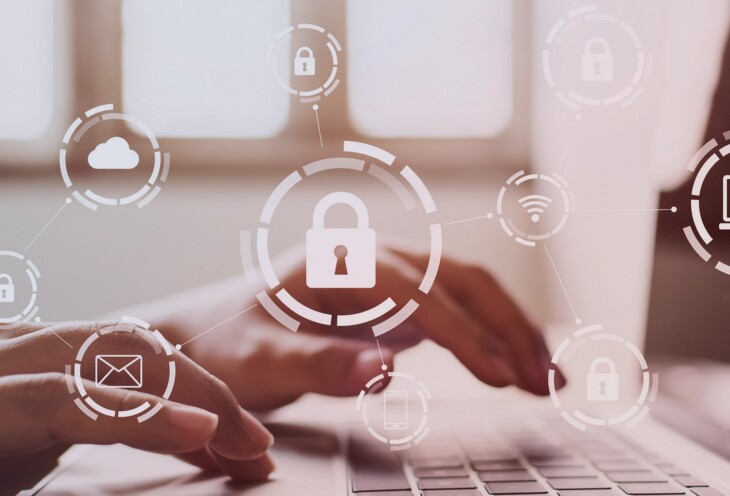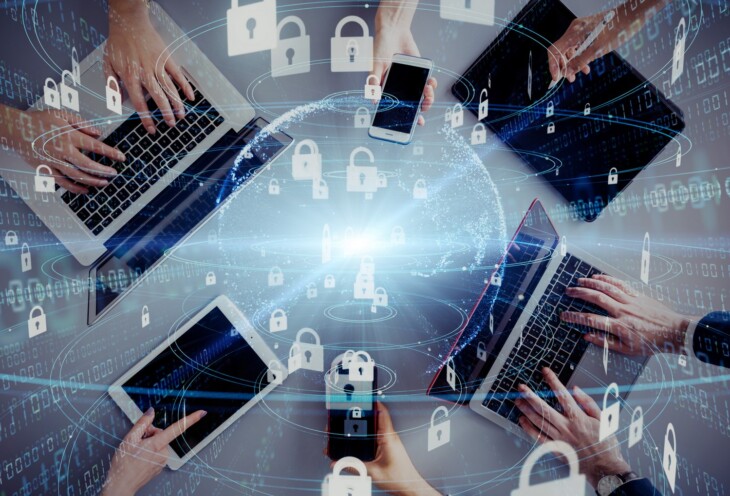Cybersecurity is constantly developing to meet new challenges and risks. The year 2024 was a significant one in many terms, not excluding new threats and trends. The rapid shift to working from home, growth in online shopping, and raising mobile banking led to new cybersecurity trends that will dominate the industry.
Contents
The 2024 Aftermath
Before diving into information security trends, it is important to analyze the whole picture. Not everything that happened in 2024 was new. For example, ransomware remains one of the main concerns for any company, Develux included. At the same time, hackers use new technologies for more effective DDoS attacks. These attacks continue to grow in numbers and can result in significant financial losses.
One of the main pain points is the growing number of employees working from home. It endorsed many companies to migrate to the cloud rapidly, which still requires following cloud security trends. For example, cloud-based attacks rose by 630% in 2024 only in FinTech. Home networks are also usually not safe and expose companies to numerous risks.
FinTech is one of the industries that suffer from the majority of attacks. 80% of entities have noted the rise in attacks in 2024. The development of mobile banking led to significant risks as mobile devices are less secure.
But some things remain traditional in terms of hacker attacks. For example, 90% of malware is still delivered by mail. It highlights the need to educate employees on measures and online hygiene.

Source: unsplash.com
Cybersecurity Trends for 2024
All the new safety trends, internet security included, signify two main requirements. The first one is to incorporate new arising technology to improve the system. The second one is to find measures to beat new threats. Here are some of the main trends for this year and probably a few more years to come.
1. Expert Skill Gap
Online safety is one of the top priorities for any company or entity. Although the implementation of AI-based solutions is on the rise, there is still a need for skilled professionals with the proper experience and education, preferably a Master’s in cybersecurity (get one online from Maryville University). It is quite difficult to find suitable employees when there is a growing demand for their services. It is predicted that security-as-a-service outsourcing will rise.
In general, it is a positive change as it offers more companies the opportunity to take advanced measures and access top experts.

Source: Praxonomy
2. Focus on Prevention
One of the main cybersecurity trends is prevention rather than reaction. It is all about assessing risks and taking measures to eliminate the possibility of an attack. The companies choose to constantly update and test their protection systems. They also adopt Zero Trust architectures, which proved to be much more reliable. Another essential trend here is micro-segmentation.
3. Zero Trust Architecture
The main difference of this concept from traditional ones is that the system doesn’t trust anyone. In classic systems, some end-users were trusted to access various data and protocols, but not anymore. It is a new approach to authentication and access requests. Everything is verified and controlled.
Another crucial concept now is to give minimal access to all users. A user needs to have access only to functions and data directly related to their everyday responsibilities. Any access higher than that has to be approved directly.

Source: Stratosphere Networks
4. AI Integration
The combination of artificial intelligence and machine learning has brought new opportunities to all industries. It is now a part of automated protection systems and solutions. It also helps to identify the possible threats and detect them. At the same time, it can also be used by hackers in malware, so like any technology, it comes with two sides.
Yet, it is safe to say that AI will remain a trend in cyber protection as it is incredibly effective and can make any system virtually bulletproof.
5. Unified Security Platforms
Before that, a lot of companies used separate security tools, apps, and technologies. Nowadays, it is not a safe thing to do anymore. The next trend is to create unified cybersecurity platform
One platform is a more complex and productive solution that helps to ensure the safety of sensitive data.

Source: Security Intelligence
6. New Cloud Solutions
Although cloud migration is beneficial in many terms, it requires new advanced security measures and protocols. It still has vulnerabilities that can be dangerous when implemented without care. Rapid data migration of 2024 didn’t allow many entities to integrate them with top-notch security, but it still has to be done now.
Cloud migration offers numerous advantages but brings with it the need for advanced security measures and protocols. The rapid data migration wave of 2024 saw many entities transitioning without integrating top-tier security measures. This oversight highlights vulnerabilities that can be perilous if addressed. Organizations shifting to the cloud encounter new network configurations and solutions. This move also implies the adoption of innovative cloud-based applications and microservers.
There are many cloud solutions like GuidePoint’s pen testing that seamlessly cater to these cloud security challenges. Specializing in the assessment of cloud-based applications and micro servers, ensures that vulnerabilities from hasty data migrations are thoroughly addressed. By partnering, entities can confidently fortify their corporate networks and solutions against emerging threats.
7. Remote Work
The COVID-19 pandemic is still far from being over. And the result of it is the growing demand for more flexible employment. Remote work is beneficial in many ways both for employers and employees. But it creates new cybersecurity threats that need to be addressed.
All of that means that companies will rethink their architecture and equip it with more advanced tools. It also includes new security controls and protocols, verification, and monitoring.
Another related concern is data privacy. It becomes its own issue and a separate discipline. There will be more legislative measures and compliances, like GDPR, for example. But there is a need for new excellent apps and solutions to protect personal data.

Source: ZDNet
8. Mobile and IoT Threats
Professionals in cybersecurity will need to deal with more attacks on mobile devices and IoT networks. They are incredibly popular and widespread, but they are still not as secure as other systems. Mobile devices are now responsible for the majority of online searches and payment and banking options. There is a huge amount of personal or corporate data (if an employee accesses a company’s systems from a mobile device) that can be an object of attack.
In Summary
The challenges of 2024 became a fundament of new digital protection trends. It is now about prevention, unified systems, and zero trust architecture. Other concerns include cloud solutions, mobile devices, and online hygiene education for employees.
